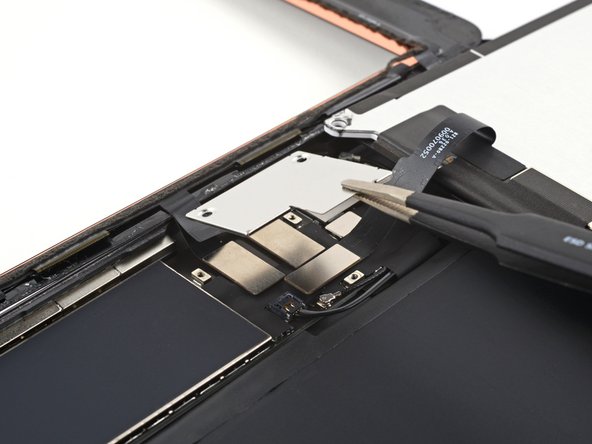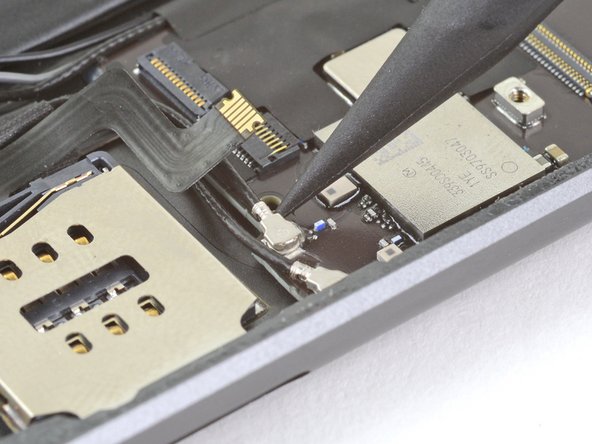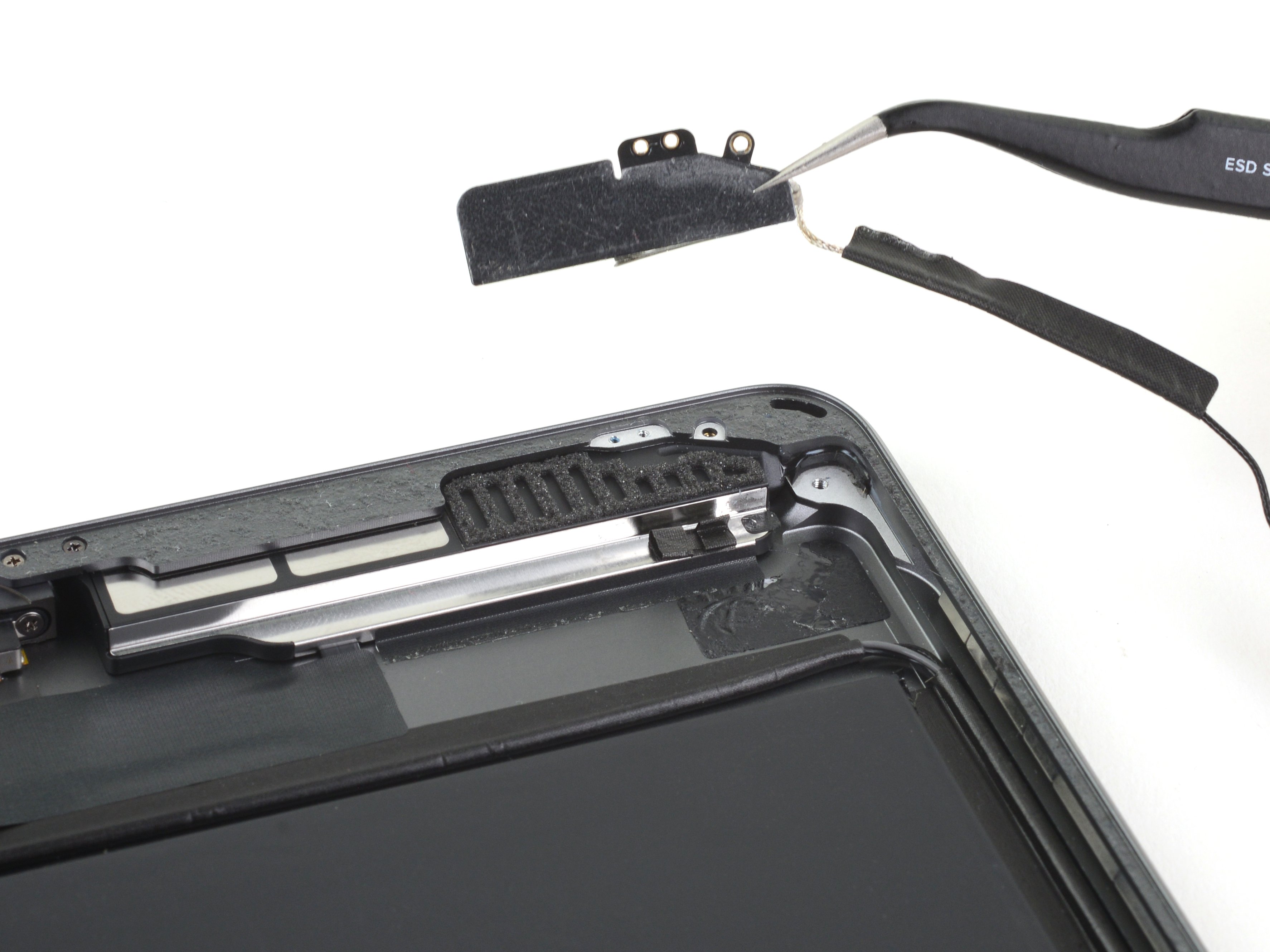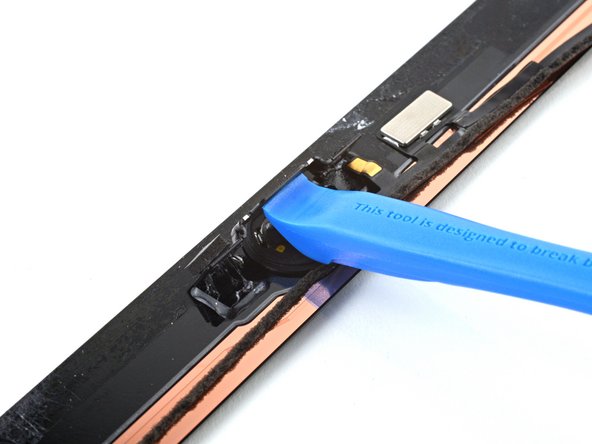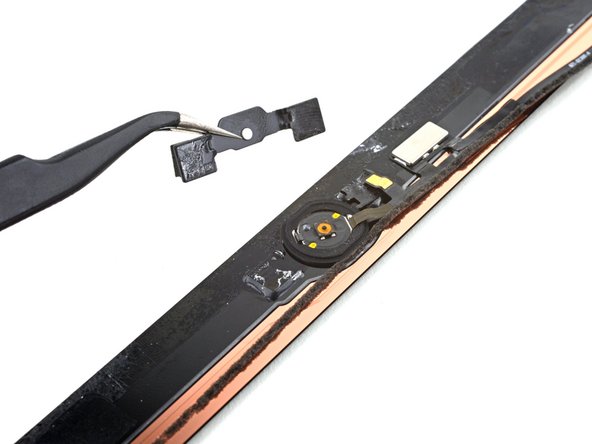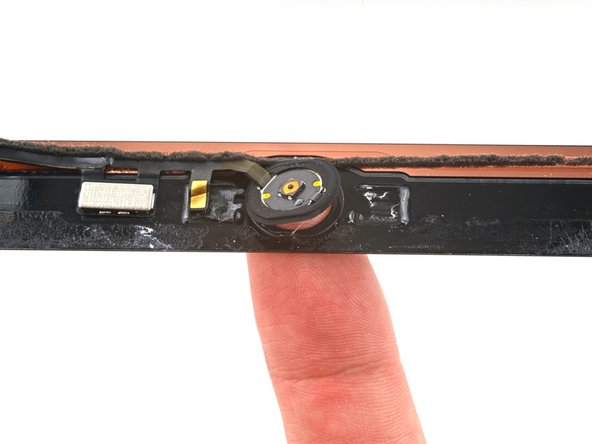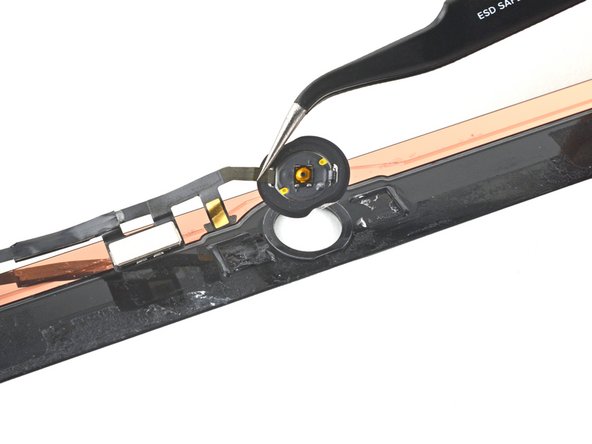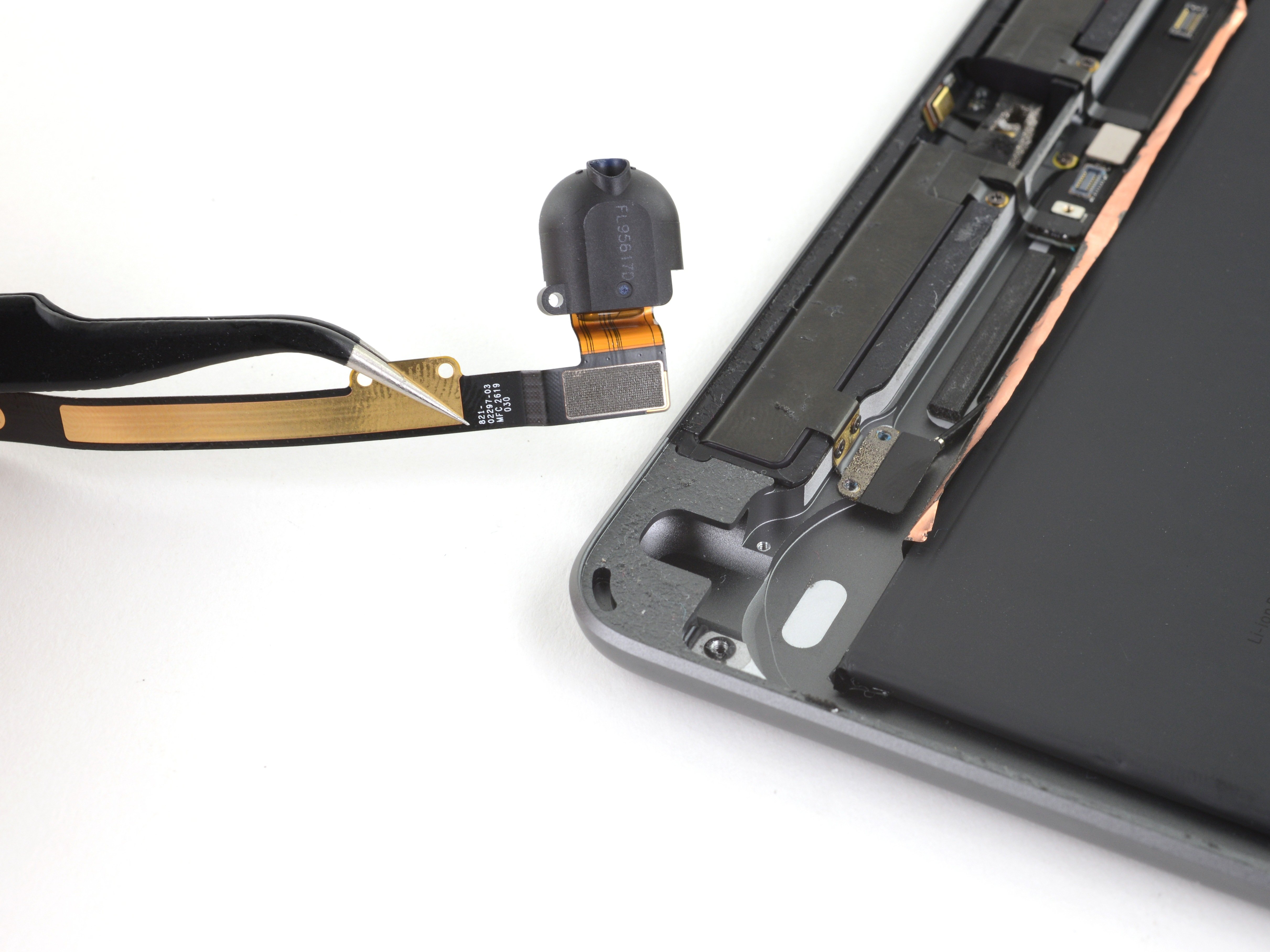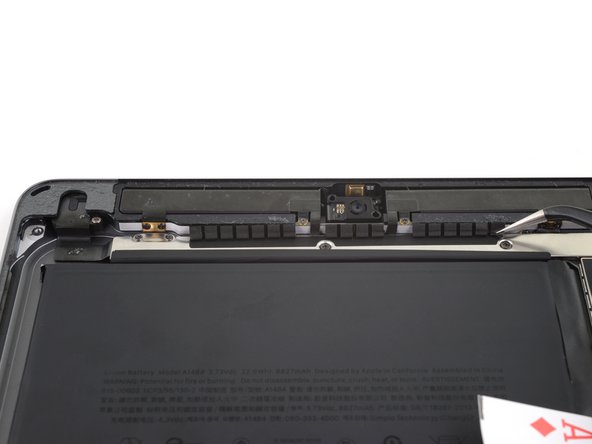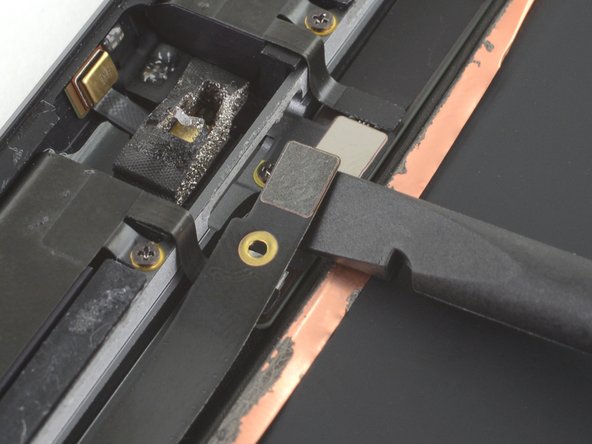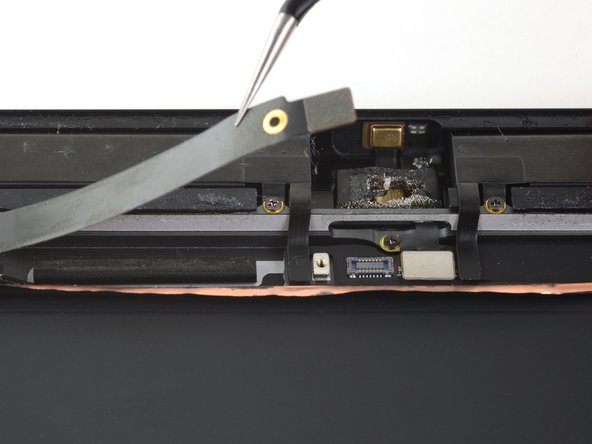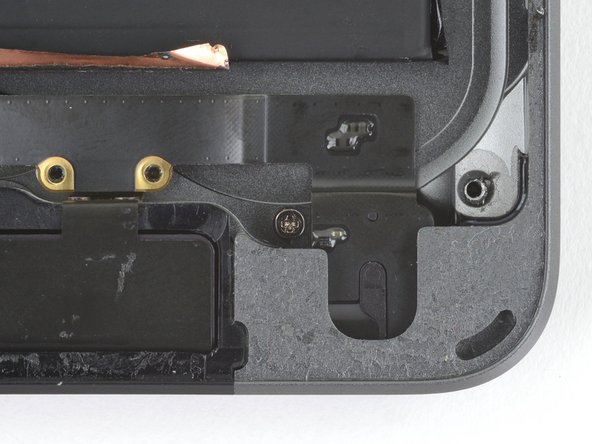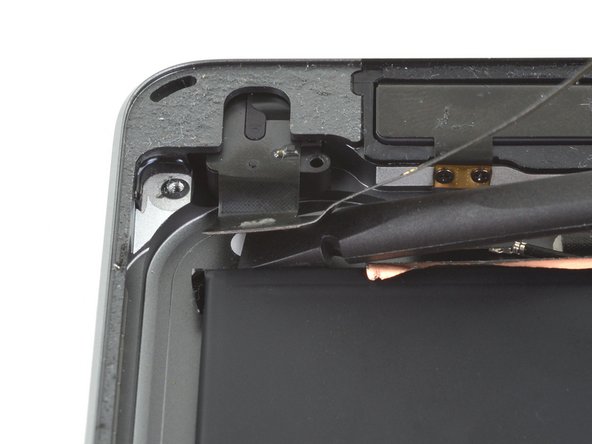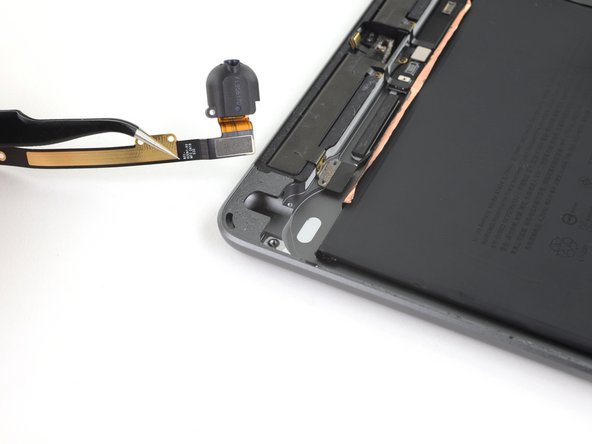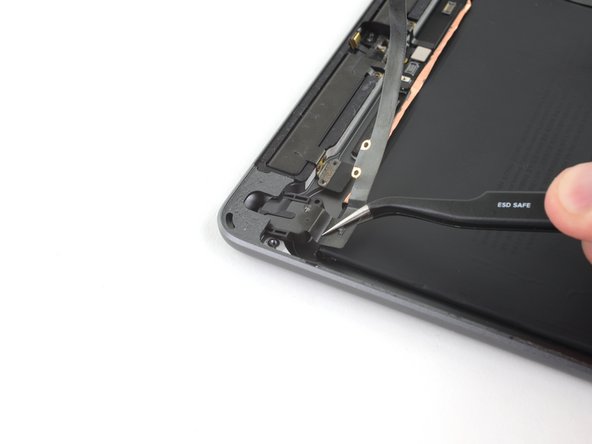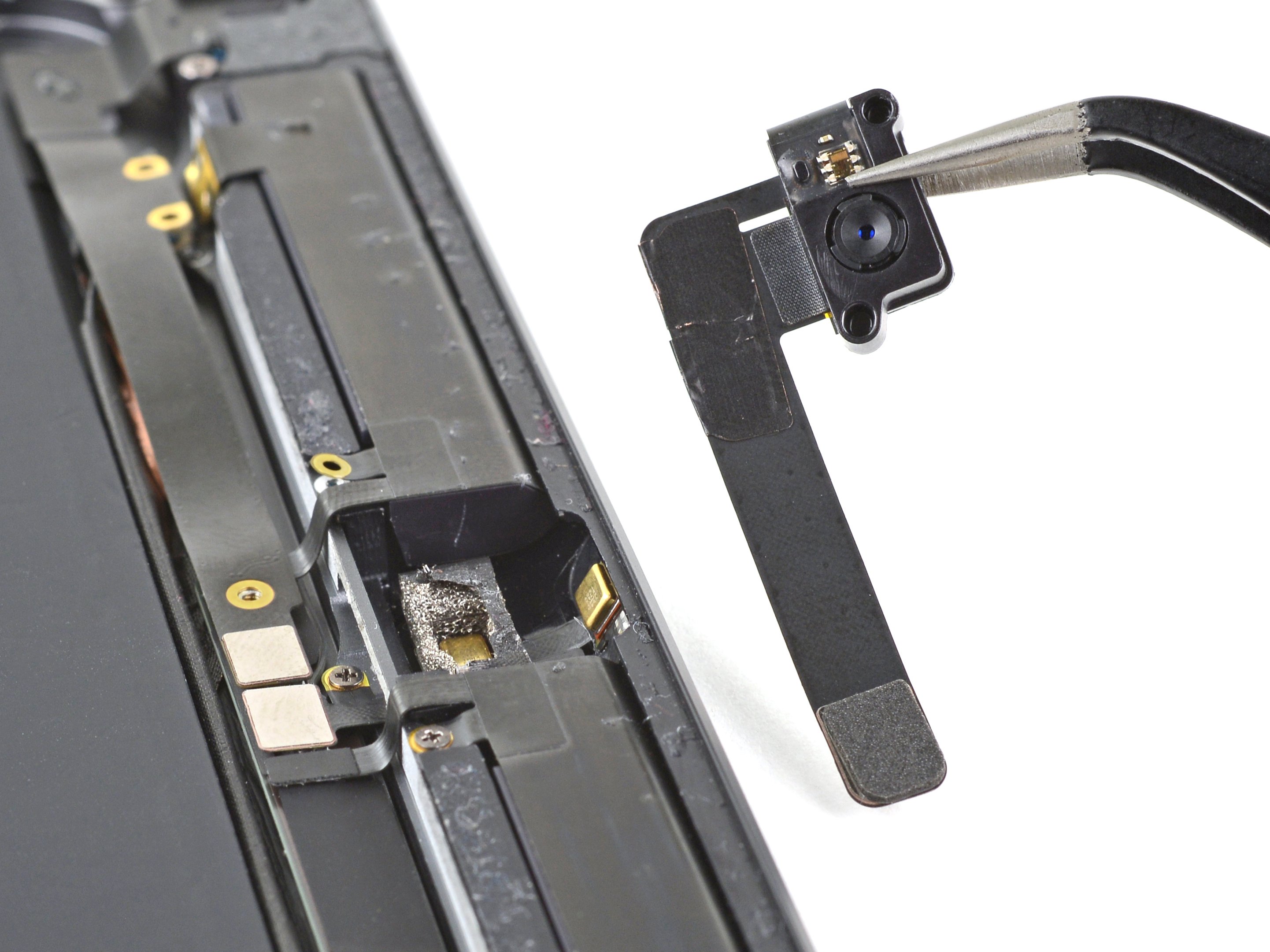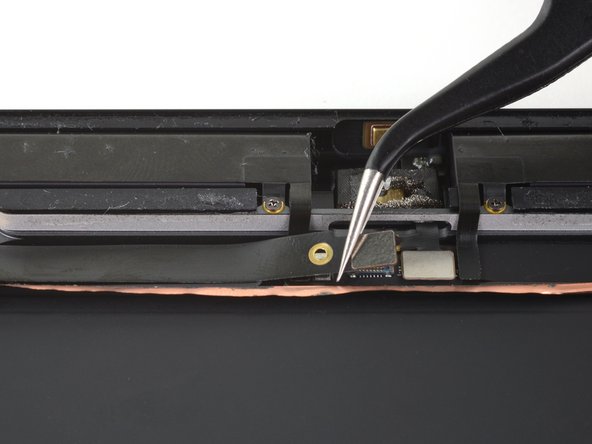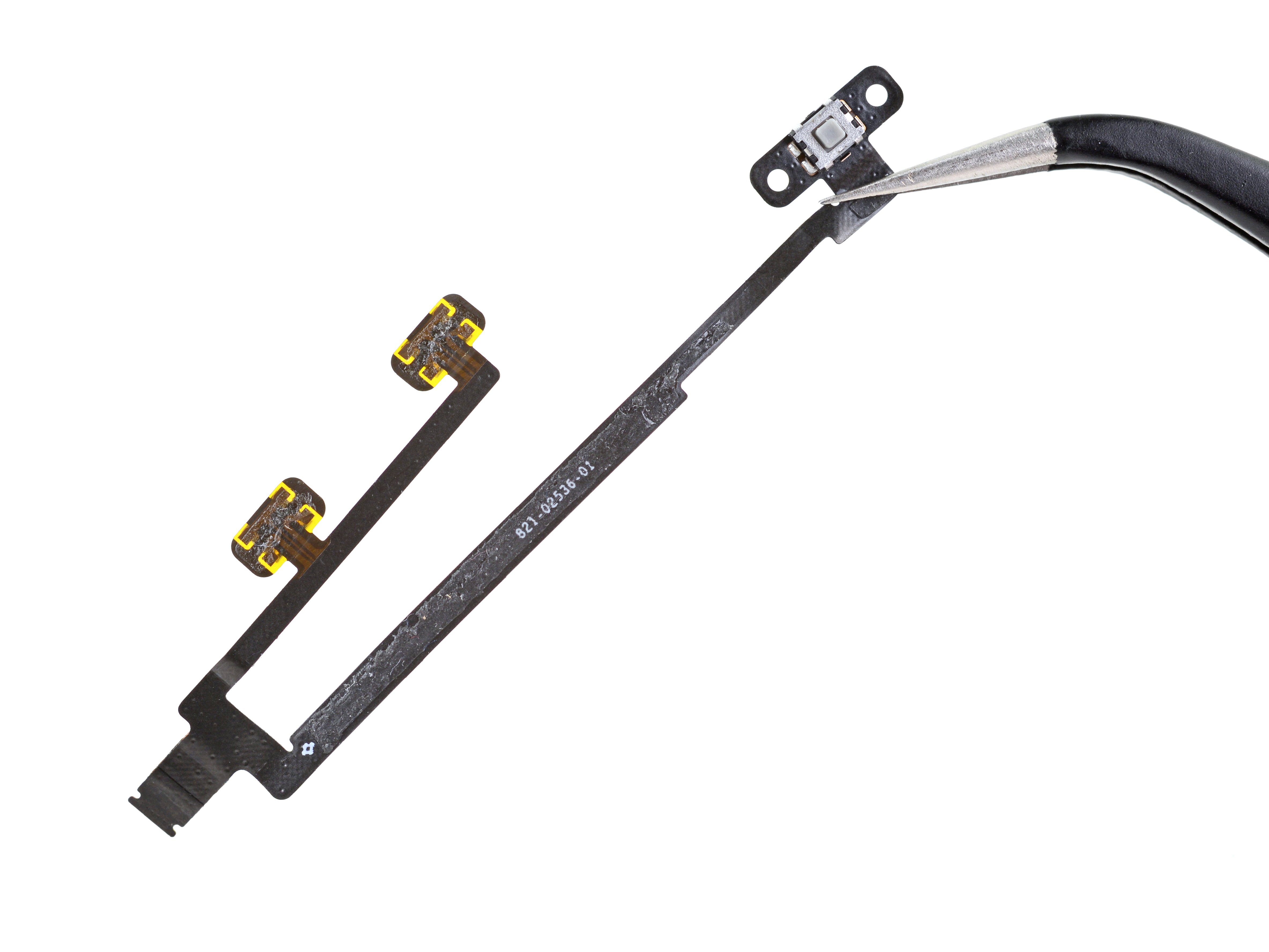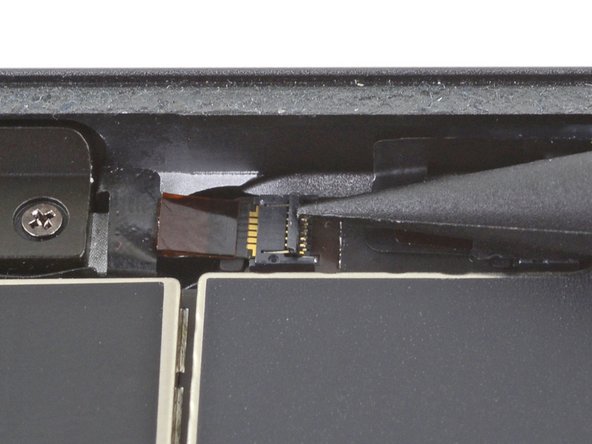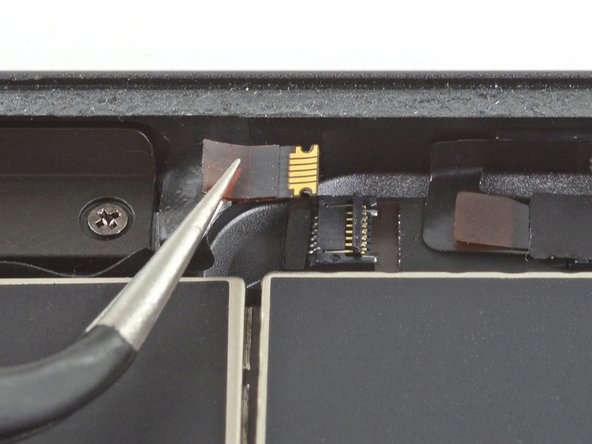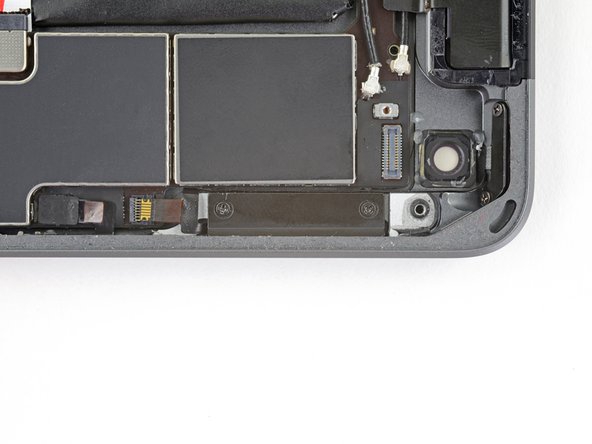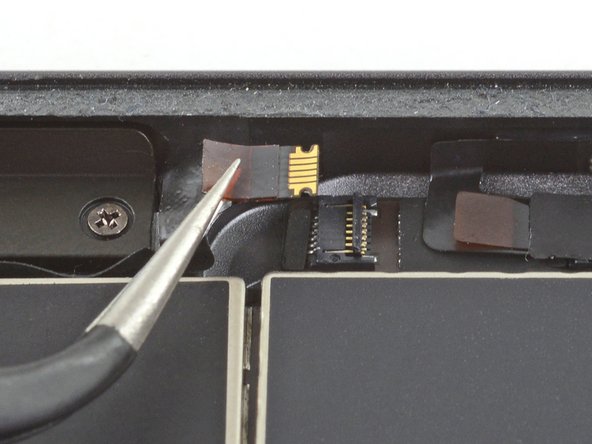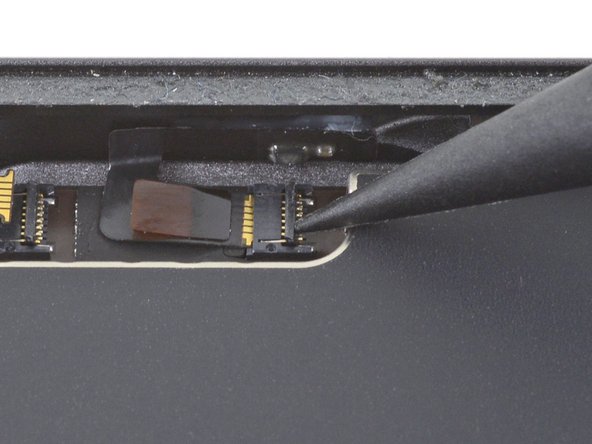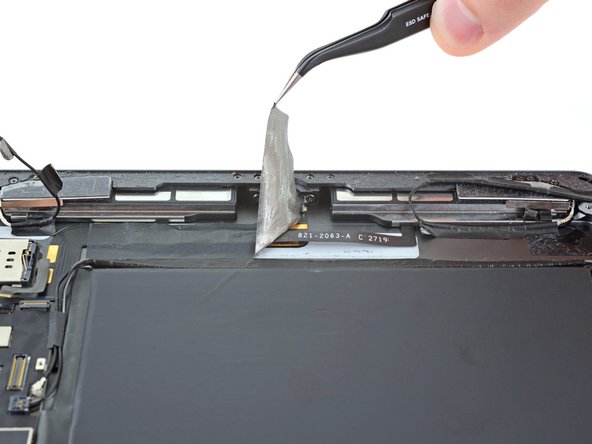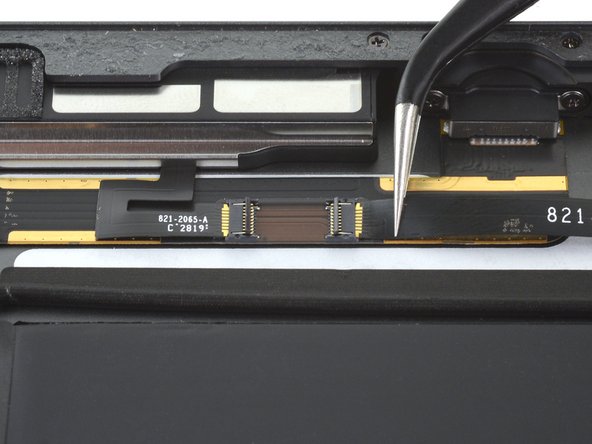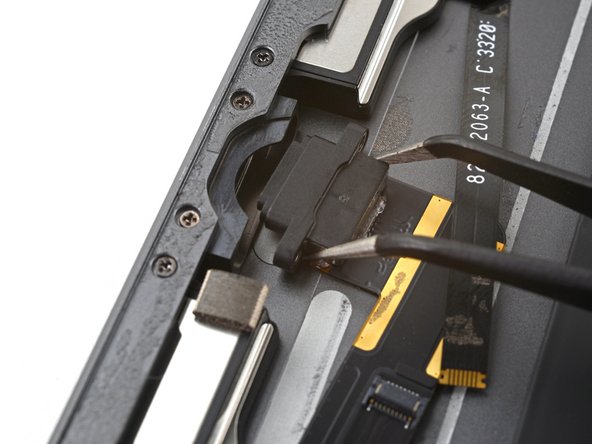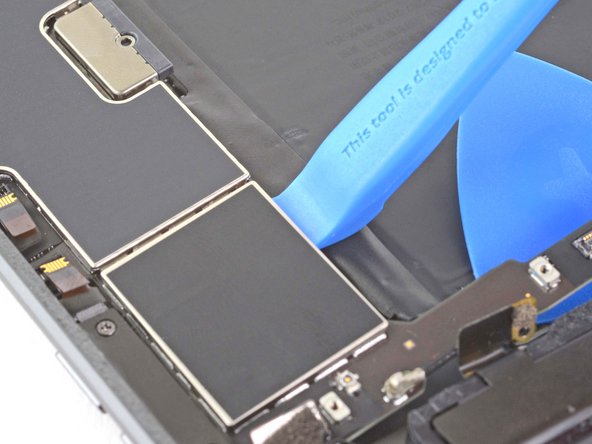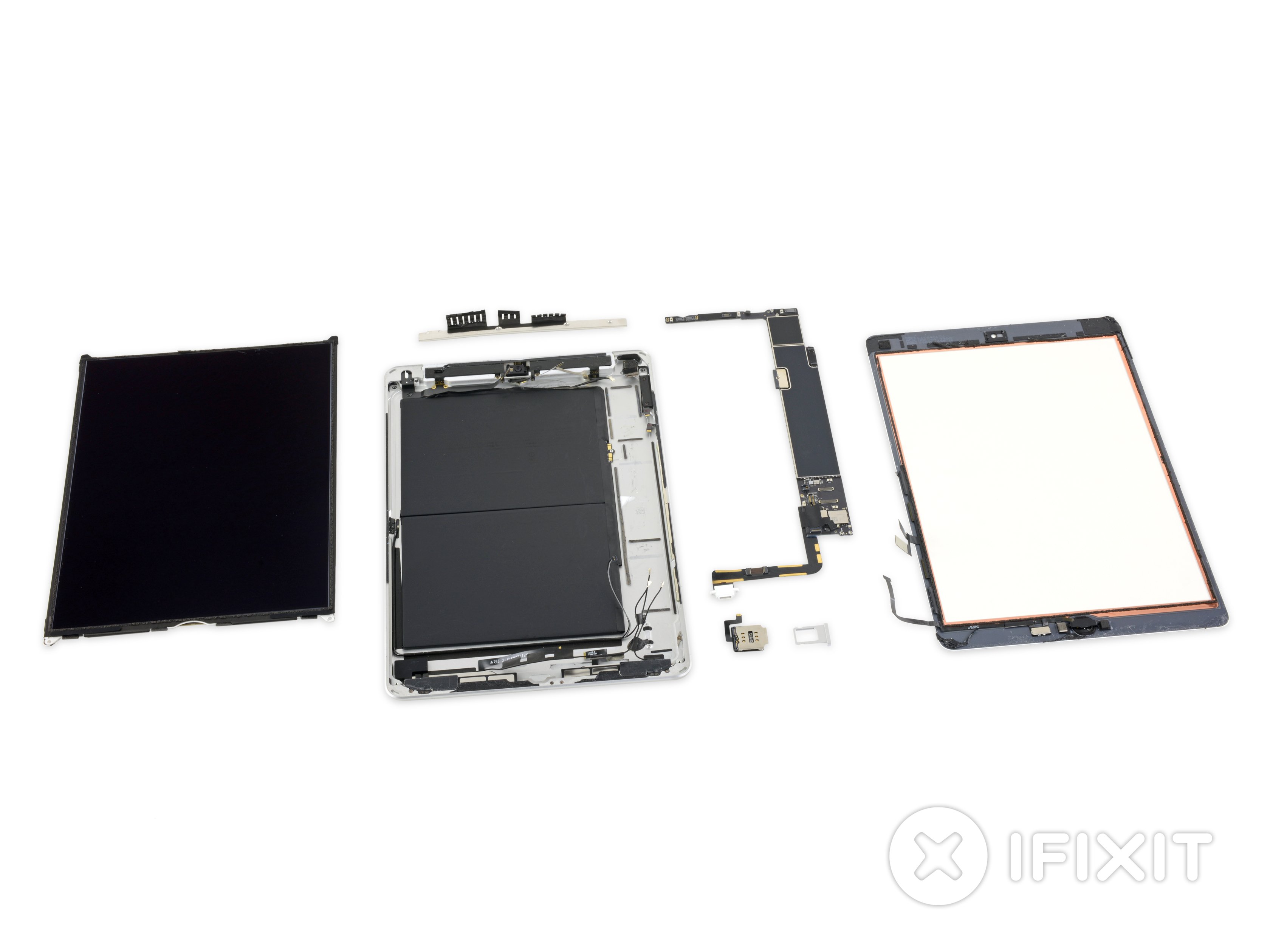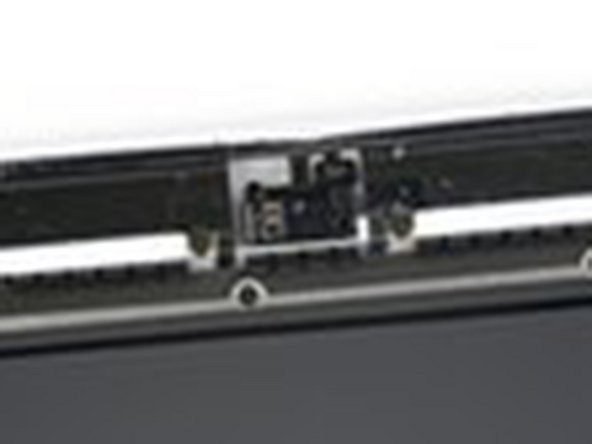Duration: 45 minutes
Steps: 62 Steps
Follow this guide to swap out the left speaker in your iPad 8 LTE. Heads up: this is only for the LTE model—if you’ve got the Wi-Fi version, check out the alternate guide. When it comes to isolating the battery with a battery blocker, take it slow and steady; those battery contacts are fragile and can bend or break, which is a no-go. If you decide to skip isolating the battery, steer clear of metal tools unless you absolutely have to use them for screws, to avoid shorting the battery or messing up delicate circuits. Some steps here borrow from earlier models, so while there are minor differences, the overall process stays pretty much the same.
Step 1
– Warm up an iOpener and stick it on the device’s left edge for a solid two minutes to loosen things up.
Tools Used
Step 2
– As you let that adhesive take its sweet time loosening up, keep an eye out for these sensitive spots that are a bit prying-shy:
– Front camera
– Antennas
– Display cables
Step 3
In the next few steps, we’ll introduce you to the Anti-Clamp, our nifty little tool designed to simplify the opening process. If you’re not rocking the Anti-Clamp, feel free to skip ahead three steps for another approach.
Want to master the Anti-Clamp? Check out this handy guide.
If your iPad’s surface is proving a bit too slick for the Anti-Clamp’s grip, a little tape can work wonders to create some traction.
– Give the blue handle a little tug backward to unlock the Anti-Clamp’s arms. It’s like a gentle pull, no force needed!
– Place something under your iPad so it stays perfectly level between the suction cups. We want this setup to be steady as a rock.
– Position the suction cups along the left edge—one at the top and one at the bottom. Make sure they’re about in the middle, but don’t stress the details.
– Keep the bottom of the Anti-Clamp secure, then press down on the top cup with a solid, steady push to create the suction. You got this!
Step 4
– Grab the blue handle and pull it forward to lock those arms in place.
– Rotate the handle clockwise a full 360 degrees, or keep going until the suction cups start to stretch out a bit.
– Keep an eye on the suction cups—they should stay perfectly aligned. If they start to drift, just loosen them a touch and straighten those arms back up.
Step 5
Turn no more than half a twist at a time, then take a breather for a minute. Let the Anti-Clamp and a little patience do the heavy lifting!
For detailed tips on using a hair dryer, check out this guide.
If the Anti-Clamp isn’t doing the trick and you need a bit more space, just add some extra heat to that area and give the handle a gentle clockwise twist, about a half turn.
– Hang tight for a minute to let that adhesive chill out and create a cozy opening gap.
– If your screen isn’t warming up enough, feel free to give it a little love with a hair dryer along the left edge of the iPad.
– Slide an opening pick under the digitizer once the Anti-Clamp has made a nice gap for you.
– No need to worry about the next step—just skip it!
Step 6
– Once the screen feels comfortably warm, attach the suction handle near the left edge of the screen, as close to the edge as you can get.
– Gently lift the screen with the suction handle to open up a small gap between the digitizer and the frame.
– Slip an opening pick into that gap you just made, and start easing it between the digitizer and the frame.
Got a cracked screen? No worries! If your display’s looking rough, a layer of clear packing tape might be just what you need to help that suction cup stick. Or, if you’ve got some tough tape lying around, that’ll work too—no suction cup needed. Worst case? You can always use a bit of superglue to attach the suction cup right to that broken screen. You got this!
Tools Used
Step 7
No need to stress if you spot the opening pick peeking through the digitizer — just gently pull it out. The LCD screen should remain intact, but be aware that some sticky adhesive might be left behind, which can be a bit of a hassle to clean up.
– Pop a second opening pick into the gap you just made.
– Gently slide that pick down toward the bottom-left corner to loosen up the adhesive.
– Keep the pick wedged in the bottom-left corner so the adhesive doesn’t sneak back together.
Step 8
– If the opening pick starts sticking to the adhesive, simply ‘roll’ the pick along the iPad’s side to keep separating that stubborn glue.
Step 9
– Gently slide the first opening pick towards the top-left corner of your device to break the adhesive’s grip.
– Keep that pick in place at the top-left corner to stop the adhesive from getting cozy again.
Step 10
– Warm up your trusty iOpener and give it a cozy spot on the top edge of your device for a solid two minutes. Let’s get that thing nice and toasty!
Tools Used
Step 11
– Gently work the pick around the top-left corner of your device to break the adhesive seal. Take it slow, you’ve got this!
Step 12
Keep the pick away from sliding over the front camera lens to avoid any accidental damage. The upcoming steps will guide you on how to do this safely.
– Gently glide the opening pick along the top edge of your device, stopping just shy of the front camera. You’ve got this!
Step 13
– Gently pull the pick out so only the tip is left nestled between the digitizer and the frame.
– Slide the pick just above the front camera to loosen up that stubborn adhesive.
– Leave the pick resting near the right side of the front camera as you move on to the next step.
Step 14
– Pop the pick back in and slide it up towards the top-right corner of the device. This will completely separate the stubborn adhesive.
– Leave the pick in the top-right corner for now to stop the adhesive from re-sticking, giving you a breather before the next step.
Step 15
– Warm up an iOpener and place it on the right side of your device for a solid two minutes to get things nice and toasty.
Tools Used
Step 16
– Gently glide the pick around the top-right corner of your device to break free that pesky adhesive.
Step 17
The display cables are hanging out around the halfway mark from the bottom of your iPad. Just give it a gentle slide until you’re about three inches away from the bottom. You got this!
– Grab a new opening pick and slide it right into the heart of the iPad’s right edge.
Step 18
– Warm up an iOpener and stick it on the bottom edge of your device for a solid two minutes to loosen things up.
Tools Used
Step 19
Avoid spinning the pick all the way around the corner to keep the antenna safe and sound.
– Gently slide the bottom-left pick down to the bottom-left corner to loosen the adhesive.
– Keep the pick in place at the corner before moving on to the next step.
Step 20
Remember to slide the pick gently towards the home button—going the other way might tick off the antenna and cause some trouble!
If you find yourself needing to slide the pick over this section again, just pull it out and re-insert it starting from the bottom-left corner. Easy fix!
– Pop a new opening pick into that little gap you just made at the bottom edge of your iPad.
– Gently slide the pick over the antenna, but stop just shy of the home button.
– Keep that pick hanging out to the left of the home button before you move on.
Step 21
Careful now—only slide the pick in up to 1 mm so the right antenna stays safe and sound.
– Slide an opening pick into that little gap you just made. You’re doing great!
– Now, gently glide the pick under the home button and towards the bottom-right corner. Just the tip should be nestled between the digitizer and the frame—you’re almost there!
Step 22
Slide the pick gently towards the home button—steer clear of pushing away from it to avoid messing with the antenna. Take it easy, you’ve got this!
If you’re still not quite there with the pick, no worries! Just pop it out, give it a fresh start from the bottom-right corner, and slide it right back in. You’ve got this!
– Slide the pick in gently towards the home button to peel away that stubborn bottom adhesive. It should separate smoothly, no sweat!
– Leave the pick snugly on the right side of the home button before moving on to the next step.
Step 23
– Warm up an iOpener and stick it on the right edge of your device for a solid two minutes to get things loosened up.
Tools Used
Step 24
Take it easy during this step! Make sure the adhesive is nice and toasty, and gently work your pick to separate all of it. And hey, if you need to pause and reheat, that’s totally cool!
If you hit some stubborn resistance, just warm up the edges a bit more and gently slide your opening pick around them.
– Give those two opening picks a twist at the left corners of your iPad to gently lift the digitizer a bit, while waving goodbye to the last bits of adhesive. You’re doing great!
Step 25
– Gently lift the left edge of the digitizer to help loosen the adhesive along the right edge of the iPad. Keep it steady and take your time—you’ve got this!
Step 26
– While holding the digitizer steady, carefully insert an opening pick between the two display cables to gently break free the last bit of adhesive.
Step 27
– Once you’ve successfully peeled off all the sticky bits, gently flip the digitizer open like a book, and lay it down flat, parallel to the iPad.
– When you’re putting things back together, make sure to tidy up any leftover adhesive on the frame—and the digitizer if you’re reusing it—using some isopropyl alcohol. Then, swap out the old adhesive for fresh strips or pre-cut adhesive cards.
– Be cautious with the display cables during reassembly. Ensure they’re folded neatly under the LCD screen to avoid any unwanted damage.
Step 28
– Grab some tweezers or just use your fingers to peel away any tape that’s covering those pesky LCD screws. Let’s get those screws exposed and ready for action!
Tools Used
Step 29
– Grab your trusty Phillips screwdriver and get ready to tackle those four 4.3 mm screws holding the LCD screen in place. You’ve got this!
Step 30
The LCD is gently stuck to the frame, so it’s not going to fight you too hard, but a little patience goes a long way!
– Slide a spudger between the frame and the top-right corner of the LCD.
– Gently wiggle the spudger to loosen the adhesive without rushing.
Tools Used
Step 31
– Now, let’s tackle the top-left section of the LCD—just like we did before!
Step 32
Hold up! Don’t yank the LCD out just yet—it’s still hanging in there by a flex cable.
– Gently use the flat end of a spudger to nudge the LCD out of its slot just enough so you can get a good grip with your fingers.
– Carefully flip the LCD over like turning a page in a book, lifting near the camera and rotating it over the home button side of the frame.
– Place the LCD down on a clean, soft, lint-free surface to safely access the display cables.
Tools Used
Step 33
– Grab your trusty Phillips screwdriver and carefully take out the 2.3 mm-long screw that’s holding the battery connector snugly to the logic board. You’ve got this!
Step 34
Check out these shots to see what the battery connector looks like tucked under the logic board. Keep these handy as your guide while you carefully unplug the battery.
Heads up: the battery connector has cantilever springs on the logic board that press against the battery’s contact pads. Since both the logic board and battery are glued down, you’ll need to gently slide something thin and flexible between the contacts to pop the battery loose.
Step 35
Be extra careful when using a battery blocker to isolate the battery. The battery contacts are super sensitive and can bend or break easily, which could lead to some serious, irreversible damage. Take your time and go easy!
Make sure the logo on the battery blocker is facing up—logo side up is the way to go!
Avoid shoving the battery blocker under the connector with too much muscle. If it’s being stubborn, try sliding a playing card under the logic board to gently disconnect the battery instead.
Ideally, the battery blocker or playing card should glide right under the logic board without a hitch, settling in at about a 15-degree angle when in place.
– Carefully slide the battery blocker underneath the logic board’s battery connector, angling it about 35 degrees. Think of it like a mini-surfboard under a connector, just at a cool angle.
– Once it’s in place, leave the battery blocker where it is while you continue working. It’s your trusty sidekick now, no need to move it around!
Tools Used
Step 36
– Grab your Phillips screwdriver and carefully unscrew the three tiny 1.4 mm screws holding down the display cable bracket. Keep them safe!
Step 37
– Carefully use tweezers or your fingers to lift and remove the display cable bracket.
Tools Used
Step 38
– Grab the flat end of your trusty spudger and gently pry up the LCD cable press connector to disconnect it.
– To reattach those press connectors, start by carefully aligning one side and pressing down until you hear a satisfying click, then repeat on the other side.
– Avoid pressing down on the center. If the connector’s off-kilter, the pins could bend, and that’s a one-way ticket to permanent damage.
Tools Used
Step 39
– Carefully lift the LCD off and gently lay it face down on a clean, soft surface free from any lint. Treat it like you’re placing it on a cozy bed – just a little extra care goes a long way!
Step 40
– Grab your trusty tweezers and gently peel away the tape that’s cozying up to the home button cable ZIF connector. You’re doing great!
Tools Used
Step 41
– Grab a spudger, an opening tool, or even your fingernail, and gently flip up the tiny hinged locking flap on the home button cable ZIF connector.
Tools Used
Step 42
– Grab your trusty pair of tweezers and gently pull the home button ribbon cable straight out of the ZIF connector. Just a little wiggle, and it’ll pop right out. No rush, you’ve got this!
Tools Used
Step 43
Hey there! Just a friendly reminder: when you’re prying things apart, make sure to focus on the connectors themselves and steer clear of the logic board socket. Let’s keep your iPad safe and sound while we work on it!
– Grab your trusty spudger and use the flat end to gently pry up and disconnect those two digitizer cable press connectors. You’re doing great!
Tools Used
Step 44
Be careful not to accidentally slice through or damage the home button ribbon cable. It’s more delicate than it looks!
– Grab that trusty flat end of your spudger and gently lift up the vibration isolator nestled right below the SIM card reader. Easy peasy!
– Now, go ahead and remove the vibration isolator. You’re doing great!
Tools Used
Step 45
The cable is lightly glued down, so just give it a gentle nudge to get it free.
– Grab a pair of tweezers and carefully peel the home button cable away from the back case. Take your time, it’ll pop off smoothly!
Tools Used
Step 46
Grab an opening pick and carefully work your way through any leftover adhesive that’s still holding the front panel assembly to the frame. Take your time—it’s like peeling off the last bit of tape after wrapping a present. Slow and steady!
Without proper insulation, those delicate digitizer areas might get a little too friendly with other components, leading to touch input issues. Not the kind of connection we want!
The insulation is sneaky—it’s invisible to the naked eye and is totally different from the usual foam dust barriers you might find in some iPads. It’s like the hidden hero of the repair world!
– First things first, let’s get that front panel assembly off. It’s time to break free!
– If your new display is acting a little quirky with ‘ghost’ or ‘phantom’ touches, don’t fret! A simple fix is to add a thin layer of insulating tape, like Kapton (polyimide) tape, to the highlighted spots on the back of the panel. And good news! Our replacement digitizers usually come with the right insulation, so you might not need to add any tape at all.
– As you start putting things back together, make sure to clear away any leftover adhesive from the iPad. Grab some high concentration isopropyl alcohol (90% or greater) and a lint-free cloth to clean those glued areas. This step is key for ensuring the new adhesive sticks like a champ.
– Once that’s done, give your iPad a quick functionality test. Then, apply those pre-cut adhesive strips to the back of the display using our handy display adhesive application guide before sealing it all up tight.
Step 47
– Gently use the tip of a spudger, an opening tool, or even your fingernail to lift the tiny, hinged locking flap on the SIM card reader cable’s ZIF connector. Easy does it!
Tools Used
Step 48
– Grab your trusty tweezers and gently wiggle that SIM card reader cable straight out of the ZIF connector. Nice and easy!
Tools Used
Step 49
There are two antenna cables in this area, but you only need to unplug the one that’s the furthest from the edge.
– Slide the pointed end of a spudger under the left antenna cable and gently lift it straight up to disconnect it. You’ve got this!
Tools Used
Step 50
Hold onto the antenna cable itself, not the connector! Tugging on coaxial cables by their connectors can cause some serious breakage. Let’s keep those connections safe and sound!
The tape holding down the left antenna cable is tucked under the tape for the right antenna cable. If you’re having trouble, gently disconnect and lift up the right antenna cable to make some room.
– Lift the left antenna cable away from the back case with care.
Step 51
– Gently continue peeling the left antenna cable off the rear case, following the bottom edge of your iPad. Take it slow and steady – no need to rush here!
Step 53
– Grab a Phillips screwdriver and remove the three screws holding that right antenna in place.
– One 2.3 mm screw, just chilling there, ready to come out.
– Two 1.4 mm screws, a little shorter but still ready to go.
Step 54
The antenna cable is held in place on the speaker by a tiny metal bracket that’s crimped tight and glued down. To get the antenna out, you’ll need to carefully cut through that adhesive bond. Take it slow and steady!
– Gently slide an opening pick between the speaker enclosure and the bracket. Take it slow, there’s no rush!
– Move the pick toward the charging port to cut through that sticky adhesive. Easy does it!
– Now, gently push the bracket away from the speaker to lift it off the tape underneath. A little wiggle and it should pop right off.
Step 55
– Place an opening pick gently between the antenna and speaker assembly, like you’re making room for a surprise gift!
– Slide that pick under the antenna to carefully slice through the foam adhesive, just like butter.
– Use your trusty tweezers, or if you’re feeling extra, your fingers, to lift off the left antenna and give it a little wiggle out.
Tools Used
Step 56
– Grab a pair of tweezers or use your trusty fingernail to carefully lift the tape that’s keeping the speaker connectors snug. It’s like unwrapping a little surprise!
Tools Used
Step 57
– Grab your spudger, opening tool, or just your trusty fingernail, and gently lift up the small, hinged locking flap on the left speaker cable ZIF connector. A little wiggle should do the trick!
Tools Used
Step 58
– Grab your trusty tweezers and gently wiggle the left speaker cable straight out of the ZIF connector like a pro.
Tools Used
Step 59
– Grab your Phillips screwdriver and twist out the 2.3 mm screw holding the left speaker in place.
Step 60
– Gently peel off the tape that’s holding the speaker in place on the back case.
Step 61
– Slide the flat end of your spudger into the groove of the speaker housing, right by the corner of the rear case.
– Gently nudge the speaker away from the rear case.
– Carefully push the speaker out from under the little shelf on the rear case.
Tools Used
Step 62
– Carefully take out the left speaker.
Success!
































































































